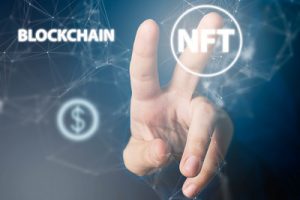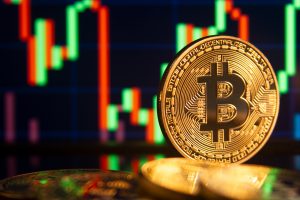
The topic of non-fungible tokens (NFT) has garnered debates and attention from their rise in popularity over the past 2 years. Multiple platforms have attempted to be the premier marketplace for this new phenomenon, and OpenSea has proved to be the most successful platform for digital transactions. The term non-fungible tokens have been defined in various ways due to the concept’s relatively new conception. Mitchell Clark (2021) identifies the difference in the uniqueness and limited supply of the medium by comparing it to a “One-of-a-kind trading card.” Nikita Karandikar (2021, p.3) goes into further detail in this differentiation suggesting that non-fungible tokens are different in the aspect that it is not divisible or interchangeable with other tokens. The assets will come with a unique identifier with a guarantee of origin which sets them apart from fungible tokens. This documentation of ownership is suggested by Kristin Cornelius (2021, p.3) as one of the reasons for their purchase and pricing under the premise of a digital asset. Owning a particular NFT suggests an investment into a particular project akin to owning stock in the stock market as the nature of the limited supply and uniqueness of each asset can only be attained by a limited number of people. This sets NFTs apart from being seen as a cryptocurrency and prevents them from being compared to traditionally digital artworks. On the other hand, the transactions of NFTs are completed through digital platforms such as OpenSea using a form of cryptocurrency.

OpenSea, and the systems surrounding it.
OpenSea is a digital marketplace platform that enables transactions between digitally owned assets. It is the largest growing platform for the purchase of various NFTs from different individuals. Projects covered by various news outlets and private projects from single individuals can be viewed and purchased from the platform. OpenSea was launched back in December 2017 by two individuals Devin Finzer and Alex Atallah who were fascinated by NFTs that were built on the growing blockchains that operated under a decentralized autonomous Organization (DAO). DAOs operated in conditions that allowed individuals to be under self-governance away from central control. This includes the introduction of smart contracts which will activate autonomously without permission from any parties (Hassan, 2021, p.3). This operation under the blockchain provides many extreme stipulations. The transparency of each transaction renders fraudulent behavior difficult to hide and improves the safety of the platform. Furthermore, the autonomous nature of the DAO program disallows any power relations as there is no need for confirmations between any parties. On the other hand, this generates discussion on governance as a whole as DAOs move away from central and government interventions in favor of a democratic and participatory system. This suggestion would be disapproved by governments that operate under increasingly present government surveillance, regulation, and intervention. Governments like China which operate under the concept of security and trust in exchange for surveillance could oppose the integration of DAOS (Kloet, 2019, p.255). Legal problems may also arise with smart contracts and the legal recognition of organizations which generates the question of liability of parties responsible in a legal dispute (Hassan,2021, p.6). Operation under the DAOs system in the blockchain may prove to be challenging to certain governments opposed to decentralization.
Why is the cryptocurrency used in place of traditional currency?
On the platform OpenSea, all transactions are done using cryptocurrency. The modern system of currency comprises credits that are issued by central banks, treasuries, and commercial banks that operate under the legal system that guarantees their circulation (Pernice,2021, p.3). Pernice (2021) suggests that Cryptocurrency can be identified as tokens that can be used as a medium of exchange that is maintained in a digital ledger using cryptography. The implementation of cryptography in place of a traditional government issuer garners questions on whether these digitals assets could be viewed as digital cash as their purpose as a general-purpose token operates under different sets of rules. Cryptocurrencies are decentralized without authority influence which could explain the appeal. Andrew Urquhart and Larisa Yarovaya (2021) introduce some of the advantages of cryptocurrencies over traditional money including Decentralization which suggests the absence of a central authority. Consensus can be achieved by the proof of work system such as mining. Transparency in the ways of trackable transactions is fully visible. Replacement of intermediaries removes the long process from banks to transfer large sums of money, and the limited supply suggests that the currency cannot be affected by inflation or depreciation. These advantages highlight the appeal of why cryptocurrencies are used in the blockchain as the medium for NFT transactions.
What type of cryptocurrency is used on OpenSea?
Cryptocurrencies operate in the blockchain which serves as a secure ledger for digital transactions. Roman Beck (2018) Defines the concept of blockchains as a ‘tamper-resistant database of transactions consistent across a large number of nodes”. It is secure from manipulation and fully transparent under each transaction. Furthermore, blockchains serve as an economic infrastructure that allows individuals to make exchanges without a central authority (Rennie, 2021, p.12). Ethereum is the premier blockchain choice for platforms like OpenSea as it is programmable and can operate in code. It is traditionally used in smart contracts for artists to be paid on a predetermined percentage autonomously based on variables such as the number of streams. This saves the creative industries millions of dollars in the distribution of payments and royalties which can be done in a few minutes. This translates directly into the digital marketplace platforms that are enabled by smart contracts and cryptocurrency wallets that approve transactions quickly and autonomously. However, there are some existing problems for the blockchains. The blockchain network cannot handle a significantly large userbase which would generate queues and increased transaction fees during congestion. Additionally, blockchain cannot fully identify real economic items that are not digital, and they can eventually lead to a fork that appears when nodes do not agree on which blocks to add to the chain (Adachi, 2021, p.7). Despite these drawbacks, the instantaneous nature of the digital wallet and the trackable and transparent transaction see the Ethereum blockchain as the top choice for the OpenSea platform.
Examples of successful NFT projects and OpenSea’s business model.
They are many recent success stories of NFT projects that have been launched by small and large organizations that promote and distribute digital assets on the platform. One of the notable examples comes in the form of CryptoPunks which are non-fungible tokens with a limited supply of 10,000. CryptoPunks is a project that was covered by various outlets such as Bloomberg and The New York Times which elevated them to one of the standard success stories of an NFT project. Below is a Twitter post of one of the CryptoPunks being bought for 224.95 Ethereum.
Punk 6947 bought for 224.95 ETH ($773,900.00 USD) by 0xdc8eb8 from 0x6639c0. https://t.co/2PAME1fhPM #cryptopunks #ethereum pic.twitter.com/PKcRHWl2CO
— CryptoPunks Bot (@cryptopunksbot) October 13, 2021
Each transaction that is made on OpenSea returns 2.5% of the fees which see the site making just under $10 million in June 2021.
Concerns on the future of NFT and the platforms involved
Questions have been asked regarding the future of Blockchains and NFTs. China has explicitly banned coin substitution in 2017 as the first iteration that was introduced was embroiled in frauds and scams (Xie, 2019, p.464). The question of law enforcement regarding autonomous technology will remain crucial in the development of blockchain systems. China has presumed the disadvantaged nature of cryptocurrency as it can pose the question of the power of capital control. However, China has also attempted to open its own centralized cryptosystem as they could see the future in the project (Xie, 2019, p. 486).
OpenSea itself operates under a transparent system of transactions that encourages various types of individuals on the platform, and it has become the most successful marketplace for the NFT craze. It became the case study for one of the most successful platform businesses in 2021 coming from two individuals interested in the future of non-fungible tokens in 2017. The platform has been successful in filling the niche for the marketplace of NFTs and the transparent business models have elevated it to become the premier platform for digital asset trading.
References
Adachi, D. & Aoyagi, J. (2020). Blockchain and economic transactions. In S. Corbet, A. Urquhart & L. Yarovaya (Ed.), Cryptocurrency and Blockchain Technology (pp. 9-22). Berlin, Boston: De Gruyter. https://doi.org/10.1515/9783110660807-002
Beck, R. (2018). Beyond Bitcoin: The Rise of Blockchain World, Computer, 51:2, 54-58, https://doi.org/10.1109/MC.2018.1451660.
Clark, M. (2021). NFTS, explained. https://www.theverge.com/22310188/nft-explainer-what-is-blockchain-crypto-art-faq
Cornelius, K. (2021). Betraying Blockchain: Accountability, Transparency and Document Standards for Non-Fungible Tokens (NFTs) Information 12, no. 9: 358. https://doi.org/10.3390/info12090358
Gemmell, K. (2021). Should You Buy a Bitcoin-Inspired Image of Lindsay Lohan? https://www.bloomberg.com/news/articles/2021-03-08/bitcoin-btc-mania-boosts-crypto-art-such-as-a-lebron-video-are-nfts-worth-it
Hassan, S. & De Filippi, P. (2021). Decentralized Autonomous Organization. Internet Policy Review, 10(2). https://doi.org/10.14763/2021.2.1556
Karandikar, N. Chakravorty, A. Rong, C. (2021). Blockchain Based Transaction System with Fungible and Non-Fungible Tokens for a Community-Based Energy Infrastructure. Sensors. 21(11):3822. https://doi.org/10.3390/s21113822
Kloet, J. Poell, T. Guohua, Z. & Yiu Fai, C. (2019). The platformization of Chinese Society: infrastructure, governance, and practice, Chinese Journal of Communication, 12:3, 249-256, https://doi.org/10.1080/17544750.2019.1644008
Pernice, I. G. A. & Scott, B. (2021). Cryptocurrency. Internet Policy Review, 10(2). https://doi.org/10.14763/2021.2.1561
Rennie. E. Potts, J. & Pochesneva, A. (2019). Blockchain and the creative industries: provocation paper: RMIT Blockchain Innovation Hub. https://doi.org/10.25916/5dc8a108dc471
Reyburn, S. (2018). Will Cryptocurrencies Be the Art Market’s Next Big Thing? https://www.nytimes.com/2018/01/13/arts/cryptocurrency-art-market.html
Urquhart, A. & Yarovaya, L. (2020). Introduction to cryptocurrencies. In S. Corbet, A. Urquhart & L. Yarovaya (Ed.), Cryptocurrency and Blockchain Technology (pp. 1-8). Berlin, Boston: De Gruyter. https://doi.org/10.1515/9783110660807-001
Xie, R. (2019). WHY CHINA HAD TO “BAN” CRYPTOCURRENCY BUT THE U.S. DID NOT: A COMPARATIVE ANALYSIS OF REGULATIONS ON CRYPTO-MARKETS BETWEEN THE U.S. AND CHINA. Washington University Global Studies Law Review, 18(2), 457+. https://link.gale.com/apps/doc/A582623938/AONE?u=usyd&sid=bookmark-AONE&xid=12c185ea

This work is licensed under a Creative Commons Attribution 4.0 International License.